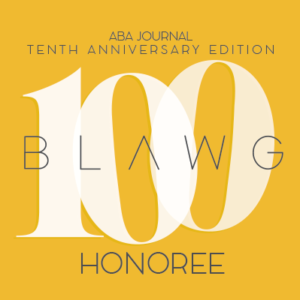A while back I posted “They Said What?: Some Compliance Thoughts on the Airline Price Fixing Investigation.” The post examined how some loose talk by airline executives had led to a federal price-fixing investigation–followed immediately by an avalanche of civil treble damage price-fixing suits. At a recent trade association meeting, multiple airline executives spoke publicly about their plans to be “disciplined” in their approach to pricing and adding extra flights on popular routes. Cue up an Antitrust Division investigation, followed in nano seconds by a torrent of private class action treble damage price-fixing cases. The airline executives may have gotten by unnoticed with their ill-advised comments, except they spoke at a time when the flying public was less than enchanted with the flying experience, including ticket prices that seemed sky-high while the price of fuel was nose diving. My sense was that it was this environment–a disgruntled public and therefore unhappy Congress folks rather than any hard evidence of price-fixing–that caused the Antitrust Division to decide it was a good idea to at least open an investigation.
I’ve been reading the public news about this investigation and the civil cases and a couple of things caught my eye. First, a recent report stated that 75 civil suits have now been filed against American, Delta, Southwest and United since July. The suits tend to be copy cat suits filed by different law firms seeking a good seat (with extra leg room for a fee) at the litigation table when the suits are consolidated. In the first suit “Plaintiffs allege that defendants illegally signaled to each other how quickly they would add new flights, routes, and extra seats. To keep prices high on fares, it was undesirable for the defendants to increase capacity.” Other suits are similar.
This avalanche of civil suits doesn’t speak highly of our current class action system. The airlines have not been convicted of anything, nor have they even been charged by the Antitrust Division. It is not illegal for a company to try to boost profits by restricting capacity. Or raising prices. The key question is whether the action was taken unilaterally (legal) or in collusion with competitors (illegal). Parallel prices alone are not enough to prove an agreement. There has to be more. See “Getting the Judge to Budge from Conceivable to Plausible Under Twombly.” But, even if a company is exonerated, the litigation is very expensive; much more so than a good antitrust education/compliance program.
Another interesting fact just out is that airline ticket prices last month saw the largest monthly decline on 20 years. “Airline fares recorded their steepest monthly decline in 20 years, falling 5.6 percent last month, according to the Bureau of Labor Statistics.” Does this mean the airlines can can get out from under all the civil suits? Not likely. The plaintiffs may spin this as the inevitable collapse of a cartel that couldn’t prop up prices forever in the face of sharply decreased costs. The airlines will point out that capacity increases that led to the lower prices were in the works for months–at the very time the plaintiffs allege there was collusion. Both sides will have experts armed with other arguments, analysis and data to support their side. Whatever the experts say, it won’t come cheaply. But, right now airfares may, so time to book a flight.
Thanks for reading.
